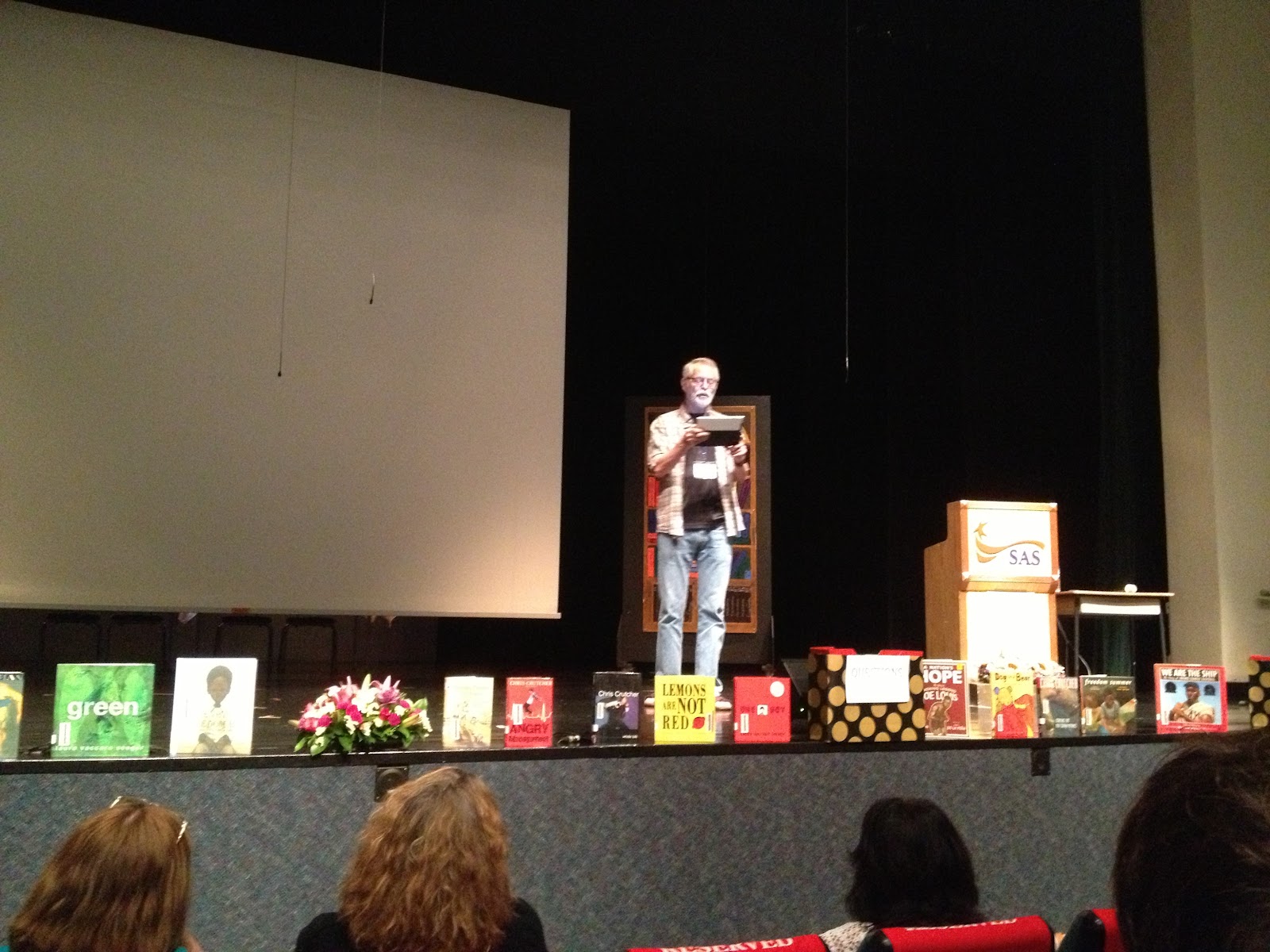"Just as we would rarely [teach] a unit or a lesson in any subject
without incorporating some reading, we should also rarely do anything in school
without incorporating technology—used powerfully and not trivially.
If we do not do this, our kids will not be getting what they need from our education.”
Blogs, tweets, text messages, status updates, Skype, Youtube, let's face it, people today are communicating in ways that were unimaginable only a few years ago. In fact, we'd be hard-pressed to find another time in human history when there was such an explosion of new communication tools, and it doesn't seem like it will let up any time soon.
While many experts refer to these as Web 2.0 or 21st century "tools," I like to think of them as 21st century "genres." Like the more traditional genres we know and love, these genres have specific features, characteristics and rules that authors know and use to make their ideas stand out. As teachers of reading and writing, we must consider teaching to these genres in our classrooms. After all, our students are far more likely to become avid authors in these genres than they are in the traditional ones.

With a quick Google search, you can find tons of "tools" out there that can help jazz up an idea or message (just check out the magic 8 ball message or the "cool links" geogreeting and the ninja message below), but these aren't really genres. According to Merriam-Webster, a genre is a category of artistic, musical, or literary composition characterized by a particular style, form, or content.

One genre that some of us are currently using with our students is the blog. With mini-lessons on commenting, adding videos and images, labeling posts, and ensuring that everything we publish passes through the POST Filter (Purpose, Offer new insight, Skillful writing, and The Core Values), we've added it to our Personal Essay unit in Grade 6.
With that model of teaching into a 21st century genre in mind, some of us recently sought out other genres that require students to apply effective conventions and communication techniques that emulate real-world 21st century genres. We didn't need to look far as our counterparts in the Intermediate School have used Fakebook, and we came across others like fake Twitter feeds, iPhone chats and Google stories. They were just what we were looking for as we asked our students to respond to their Greek mythology reading.
* * * * *
Many of us use Facebook to connect with friends and family both near and far and share what's going on in our lives. And while students need to wait to create their own accounts, they can become familiar with the genre through Fakebook, a site where students can create a fake profile, friend list and string of status updates.
When we asked our students to pick a Greek mythology character and retell the myth from his/her point of view, we were impressed with what they came up with. Check out Bryanna E.'s sample on Pandora (click View Full Screen to remove the ads):
* * * * *

Twitter is another genre that has taken the world by storm. I have to admit that I'm more of a novice with this one, but every loyal user I know swears by it. Through Twitter, users are able to follow others (i.e. experts in their field) as they tweet out messages and announcements in 140 characters or less. There are also specific features with user names and hashtags that help users manage their tweets.
While the fake Twitter feed seemed to be a bit trickier than Fakebook, it worked for Claire R.:
* * * * *
If you don't think students need to learn Twitter quite yet, how about iPhone chats? Chances are if they don't own an iPhone, they may know someone who does.
By focusing on how to write succinct messages with the abbreviated text language, they learn how this genre is unique from the rest (and how these conventions don't work in other forms of communication).
Here is AJ K's chat from Perseus to Persephone:
* * * * *
Finally, with Google Story Builder, students can capture a group of characters' collaboration on a Google Doc. Our students found this option to be the trickiest, but it is also one that leaves a lasting impression. Here's my sample:
I'm sure we'll come across more genres like this in the future, but for now, I know one thing is for sure: when our students sat down to try them out, they were engaging with the content like never before. Not only did they enjoy taking on the voices of the mythical characters, they knew the skills they were practicing would be useful to them. In short, the learning was relevant, purposeful, and, according to them, "fun."
So, consider trying one of these out. Add it to the possible repertoire of reader responses. Alternatively, if you know of another genre/site, leave a comment. One word of caution though. As with any technological project, be prepared for some unexpected hiccups along the way. Whatever you do, try it out yourself beforehand, and be sure to have a tech guru on speed dial. Thanks, Heather!
Common Craft Explanations
Web Tools 4U2 Use
Cool Tools for Schools
The Daring Librarian

Images from:
- http://www.thedaringlibrarian.com/
- http://www.abcnews.go.com
- http://www.pressplay.co.ke/
- http://www.tusconsentinel.com
- http://www.geogreeting.com/
- http://www.fodey.com/generators/animated/ninjatext.asp






